Sarutahiko Shrine, located right next to the inner shrine of Ise Grand Shrine, is a shrine famous for enshrining the god of Michihiraki and the god of entertainment, who guide everything in the right direction. There are approximately 2000 Sarutahiko Shrines across the country, and the one in Ise City is one with a long history, appearing in the Nihon Shoki and Kojiki. We will introduce you to the gods enshrined at Sarutahiko Shrine, power spots within the shrine grounds, what kind of festivals are held, and recommended spots near the shrine!
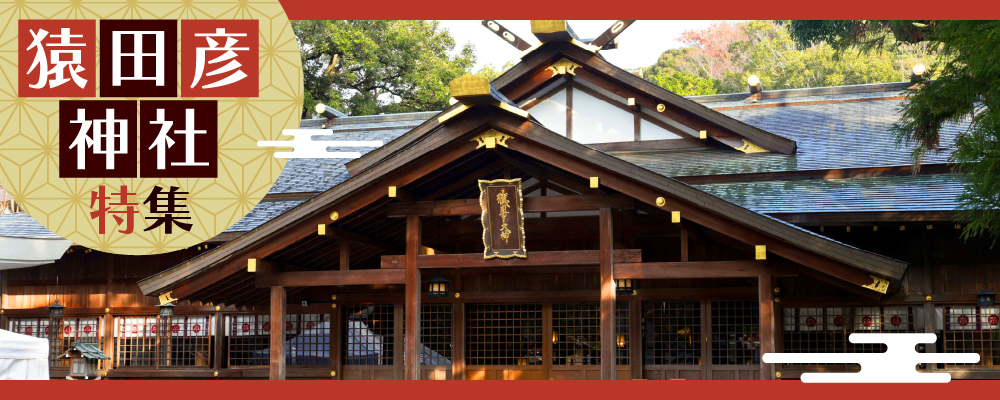
table of contents
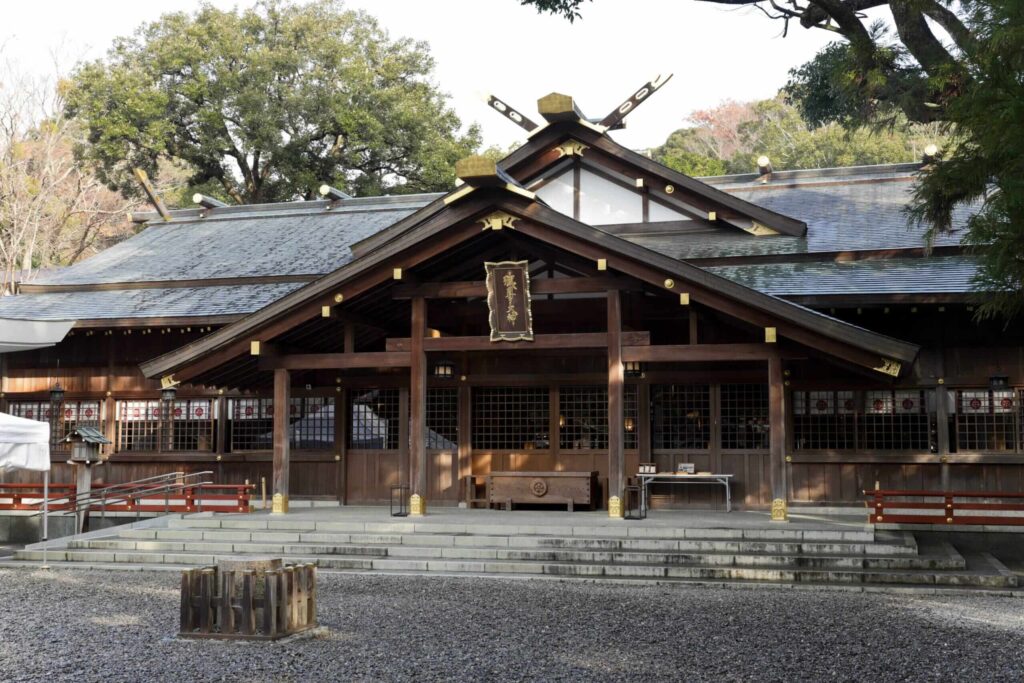
Sarutahiko Shrine enshrines the gods of Michihiraki, Sarutahiko Okami and Ota no Mikoto. Since the main deity, Sarutahiko Okami, is the god of guidance, it is said to have various benefits such as direction, good harvest, good luck in business, and traffic safety.
For this reason, it is said that if people who are just starting something new or who have lost their way visit this shrine, Sarutahiko Okami will lead them to success and to their destination.
Sarutahiko Okami appears in the Kojiki and Nihon Shoki, and his appearance is that his eyes shine like mirrors, and he is tall and has a long nose.
Another characteristic of this shrine is that the main building, the pillars of the chozuya shrine, the torii gates, and other parts of the building are shaped like octagons to represent the divine virtue of Sarutahiko Okami, who is also the god who protects all directions.
The deities enshrined at Sarutahiko Shrine are Sarutahiko Okami and his descendant Ota no Mikoto. Ota-no-Mikoto is said to be the god who dedicated the sacred area of Isuzu River and contributed to the creation of Ise Grand Shrine.
The Ujitokoke family, who have served as the chief priests of Sarutahiko Shrine for generations, are direct descendants of Sarutahiko Okami.
Sarutahiko Shrine has no direct relationship with Ise Grand Shrine and is not included as a separate shrine, subsidiary shrine, or set shrine.
However, Sarutahiko no Okami guides the grandson of Amaterasu Omikami, Ninigi no Mikoto, and the area upstream of the Isuzu River, which was developed by Sarutahiko no Okami, is the location of the inner shrine of Ise Grand Shrine. In mythology, it can be said that this shrine has a deep connection with Ise Grand Shrine.
Sarutahiko Shrine, which enshrines Sarutahiko Okami, the God of Michihiraki, has various wishes.
We also accept prayers to convey your wishes to the gods, such as road guidance, family safety, physical health, traffic safety, direction, exorcism, business prosperity, business prosperity, company prosperity, construction safety, etc.
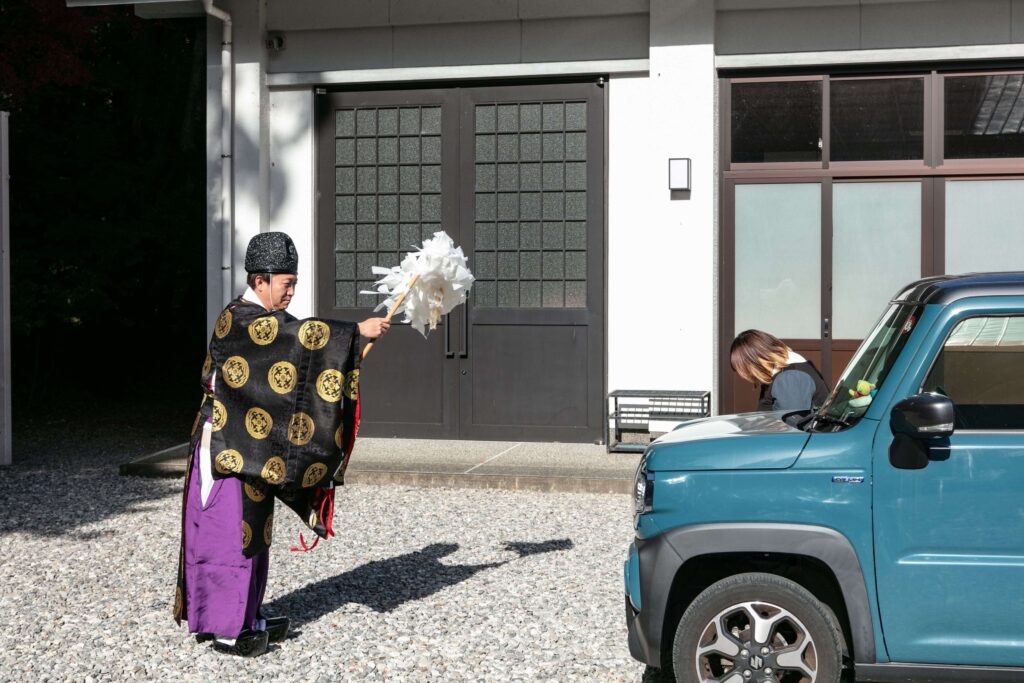
Sarutahiko Okami is also said to be the god of traffic safety, based on the myth that Ninigi no Mikoto guided the road.
To receive an exorcism, park your car facing forward at a dedicated exorcism location, and apply for an exorcism at the exorcism location. You will need your car license plate number to apply, so be sure to write down your car license plate number before heading to the awarding office.
Purifications are accepted at any time and take approximately 20 to 30 minutes, but depending on the season and time of day, it may take some time, so please apply with plenty of time to spare (advance reservations for exorcisms are not accepted). Is not).
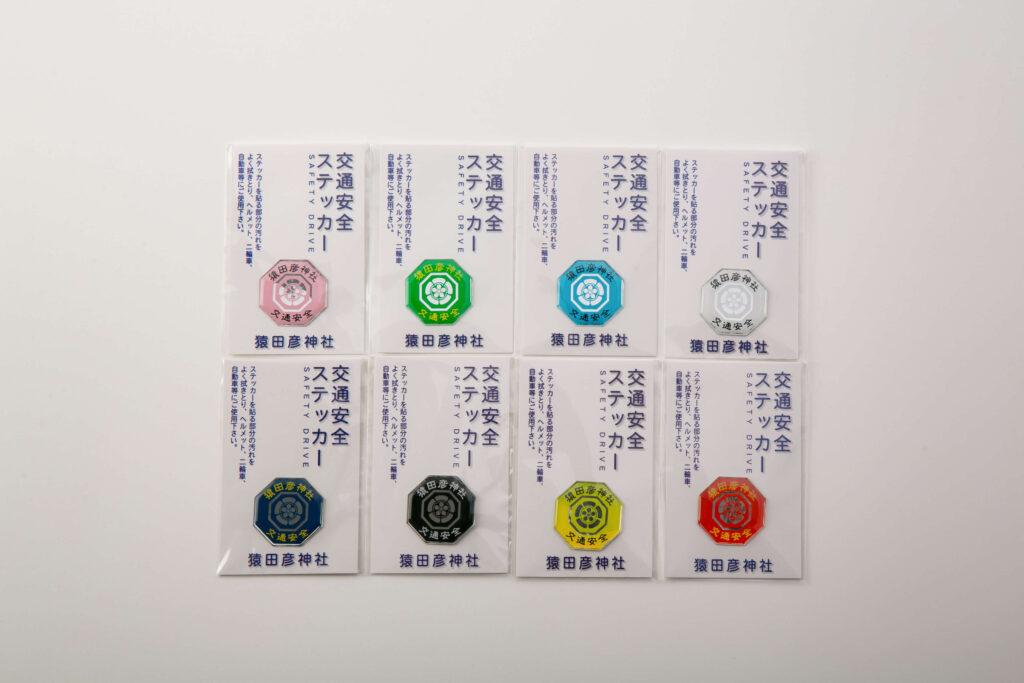
This octagonal sticker prays for traffic safety and features the crest of the Sarutahiko Shrine.
There are eight color variations, so choose your favorite color and attach it to your car or bicycle.
At Sarutahiko Shrine, we hold Shichi-Go-San prayers to pray for the healthy growth of children, and weddings to pray for long-lasting good relationships. Sarutahiko Shrine also accepts prayers to convey various wishes to God.
In addition to car purification, Sarutahiko Shrine also accepts Shichi-Go-San prayers throughout the year (there are times when it is temporarily closed due to various festivals, etc.).
After the prayer, you will receive a bamboo talisman decorated with Chitose candy and a dog decoration.
Shichigosan prayers are accepted throughout the year, but the Shichigosan Festival is also held on November 11th, which is Shichigosan Day.
Sarutahiko Shrine has a plan where you can have your wedding ceremony in the shrine building (limited to 1 couples per day).
Purification and Tamakushi prayers are held for the families in attendance, and during the ceremony there is also a dedication of the ``Michibiki no Mai,'' a combination of gagaku and dance that has been passed down only to Sarutahiko Shrine.
At the reception, you can enjoy luxurious cuisine in three genres: ``French'', ``Japanese'', and ``Japanese-Western'' cuisine using Ise lobster and Matsusaka beef.
Being able to visit Sarutahiko Shrine, the venue of the wedding ceremony, at turning points in life such as shrine visits and Shichi-Go-San festivals is a unique charm of the Shinto ceremony (a wedding ceremony held at a shrine).
The hatsho-ryo (prayer fee) at Sarutahiko Shrine is 5,000 yen or more, with 10,000 yen or more for the semi-special prayer of Tamagushi Hōten, and 30,000 yen or more for the Tamagushi Hōten, as well as Kagura. It will be a special prayer with a sermon.
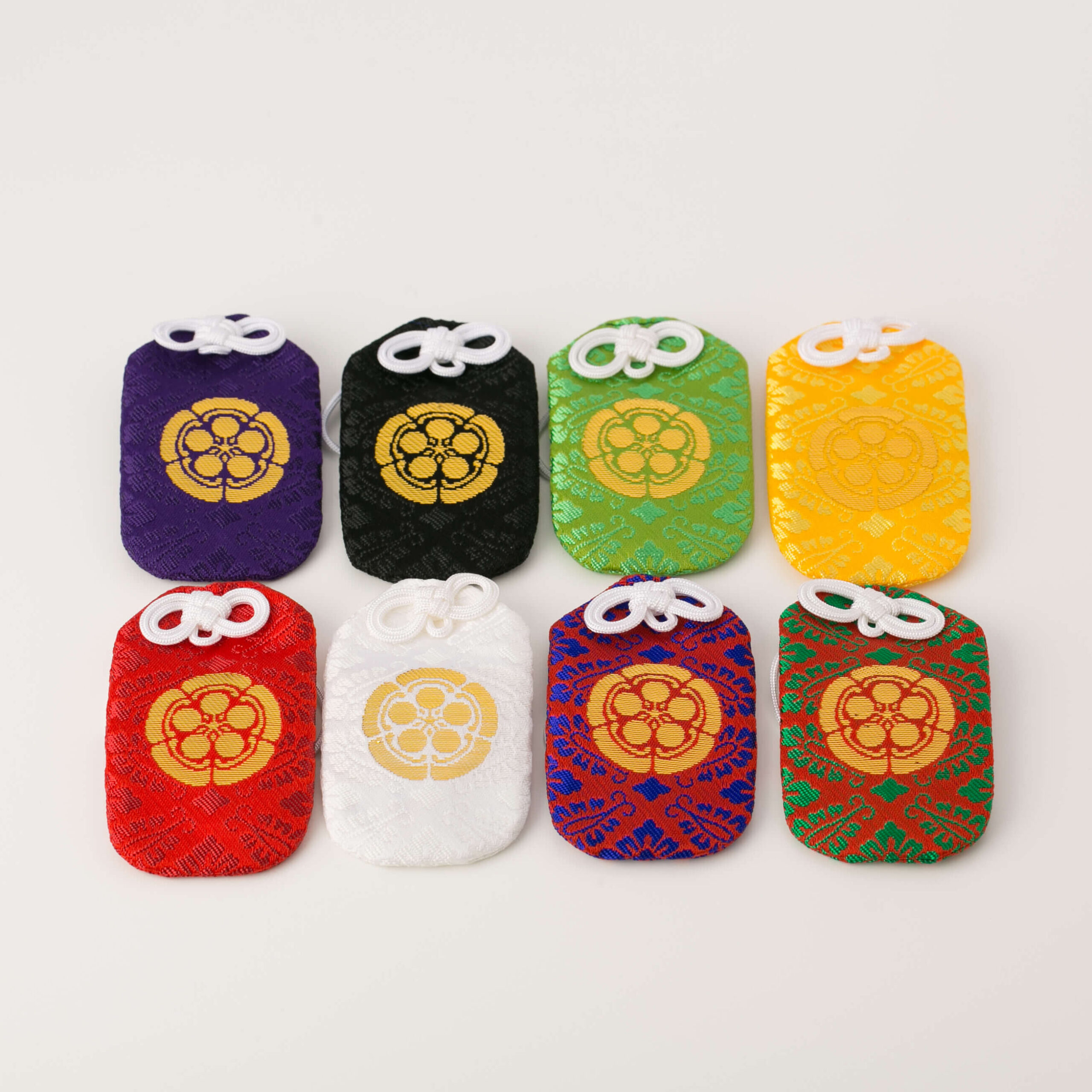
Sarutahiko Shrine's gifts include the ``Michihiraki Amulet,'' which guides things in a positive direction.
There are eight different colors of amulets, including purple, green, yellow, and reddish-green, and there are also small-sized amulets that are cute and easy to carry.
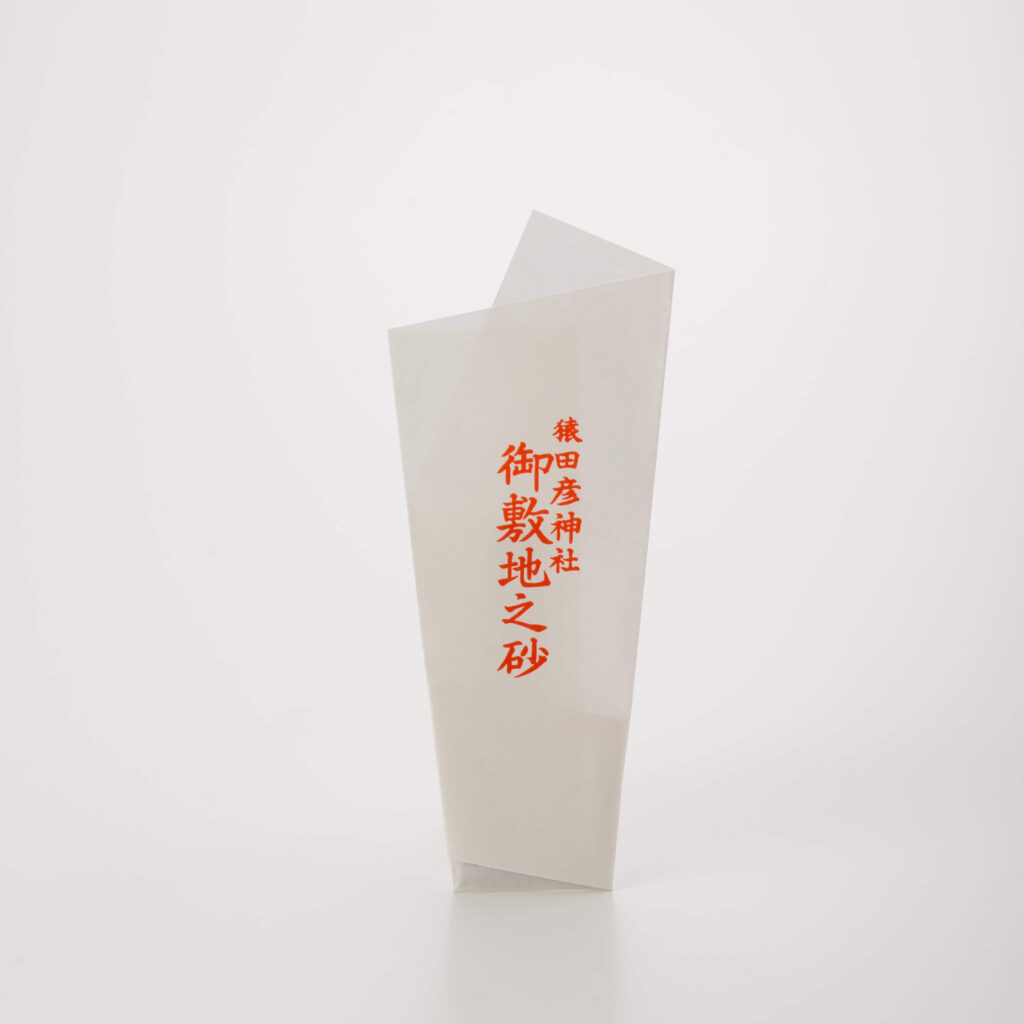
Mishikichi no Suna, which is raised in front of the shrine during one of the rituals at Sarutahiko Shrine, is the ``Kyosuna Distribution Festival,'' which is sand used to purify the land and objects.
It is said that when sprinkled in time for the New Year, you can bring in a good year.
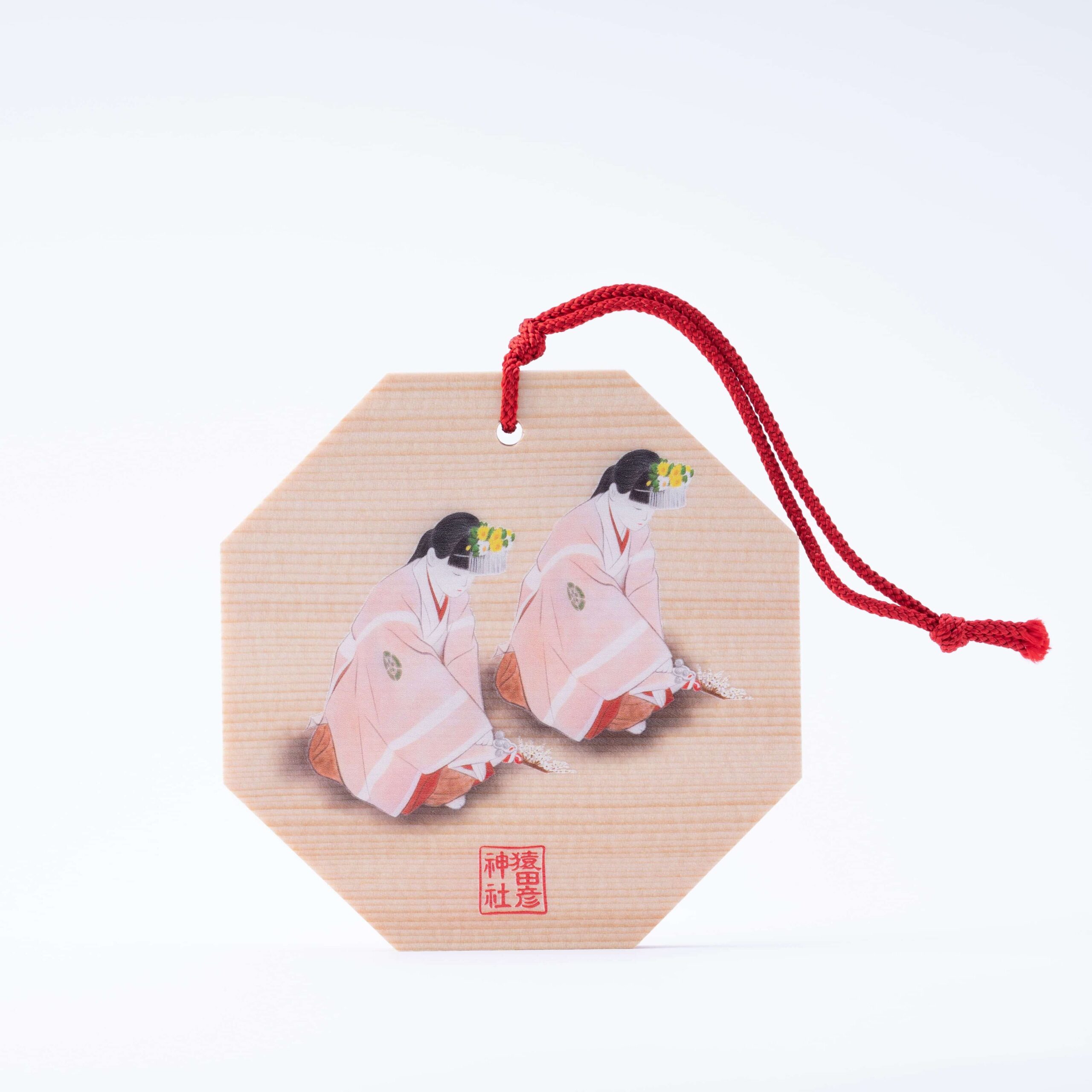

Unlike the votive tablets and talismans of other shrines, the votive tablets and zodiac guardians at Sarutahiko Shrine are octagonal, which symbolizes Sarutahiko Shrine.
It is said that if you wear a cutely designed zodiac charm that corresponds to the year you were born, good luck will come to you, so choose the charm that suits you.
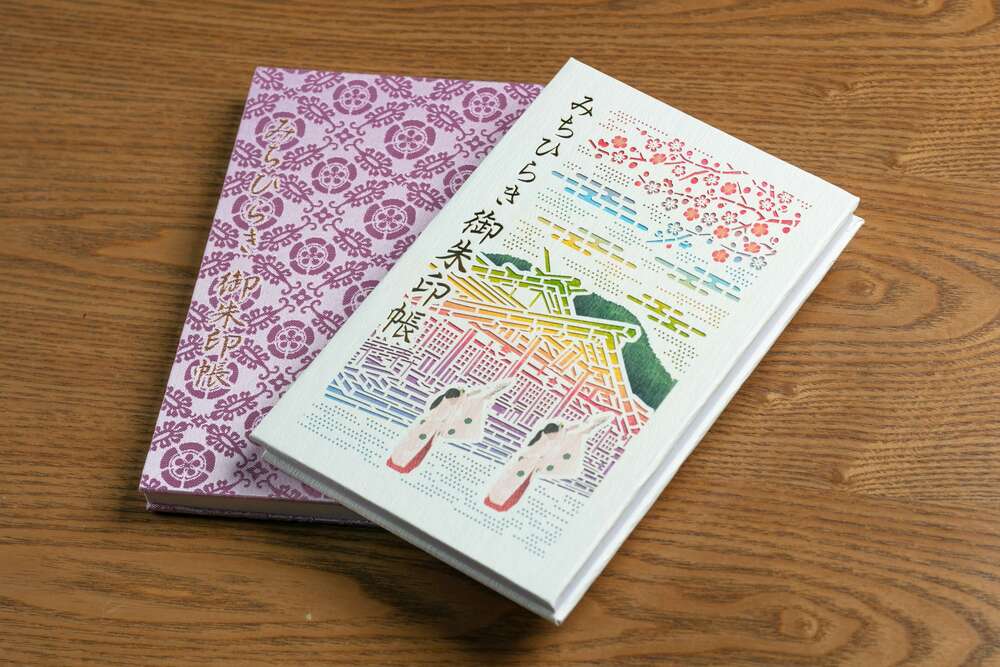
Sarutahiko Shrine has two types of stamp books: a rainbow-colored stamp book with a shrine maiden's dance design, and a light purple stamp book with the divine emblem of a gourd plum bowl.
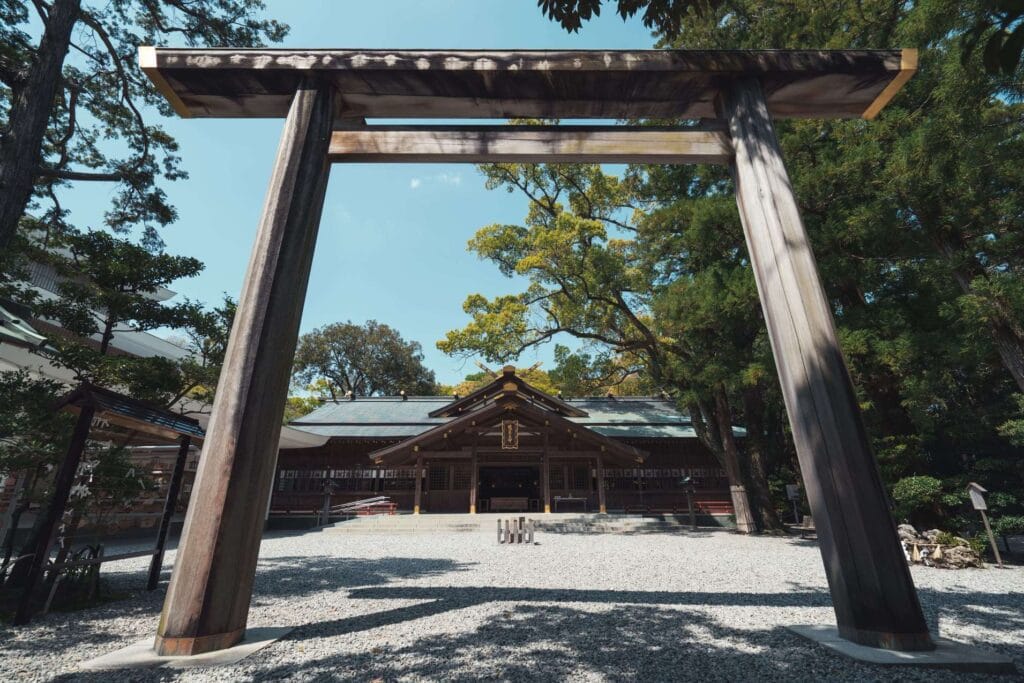
There are many things to see at Sarutahiko Shrine, such as the Okanda where the Ota Festival is held, the compass stone of the ancient shrine, Sarume Shrine, a shrine for entertainment and marriage, and the unusual structure of the shrine building.
Other highlights include the pillars of the torii gate and the pillars of the shrine building, which are all octagonal in shape and are said to be blessed with the blessings of Sarutahiko Okami.The shrine is also lined with octagonal votive tablets, which are rare in Japan.
The reason why octagons can be seen all over Sarutahiko Shrine is because the octagon is the shape that represents the divine virtue of Sarutahiko Okami (preventing direction).
The octagons found throughout the temple grounds are auspicious shapes, so be sure to look for them when you visit!
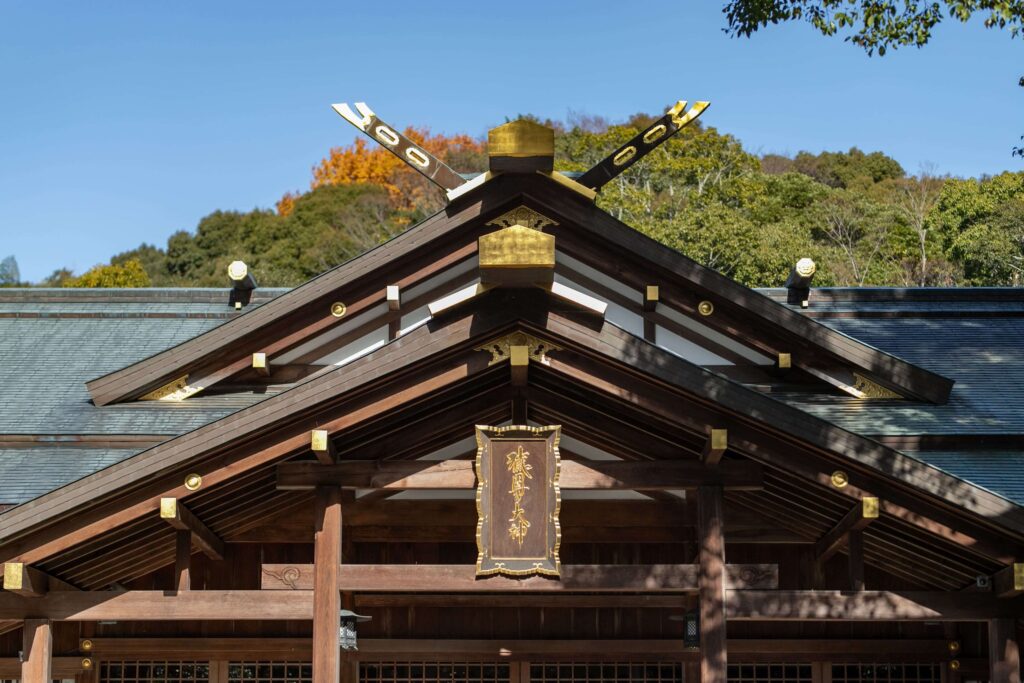
The main building of Sarutahiko Shrine has a unique architectural style called ``Sadahiko-zukuri'' that cannot be seen at other shrines. Sadahiko-zukuri has a special structure of double gables (the roof gables have a double structure) and tsumairi-zukuri (a structure with entrances and exits at the ends of the building). The gables and hardware throughout are eye-catching.
The bonito trees (wood arranged on the roofs of shrines, etc.) on the roofs of the shrine buildings, the pillars of the shrine buildings, the water fountains, the large torii gates, etc. are octagonal in honor of Sarutahiko Okami, the god of path opening. .
There are also parts of buildings other than the main shrine that are octagonal, so when visiting Sarutahiko Shrine, you may want to pay attention to where they are hidden.
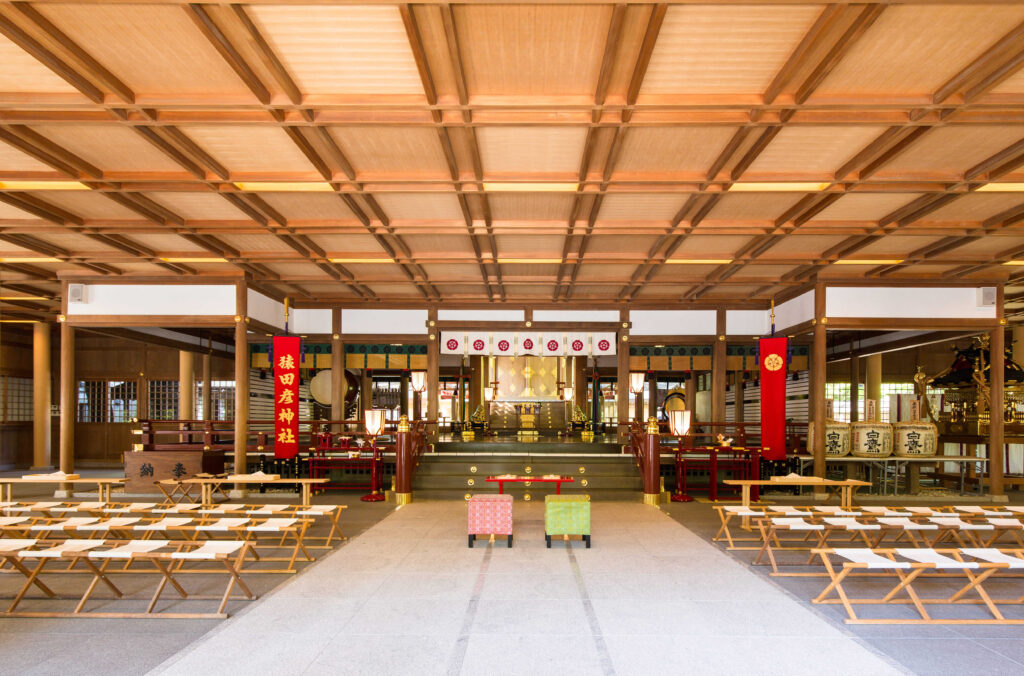
The interior of the shrine building is beautifully and luxuriously decorated with wood, white plaster, and hardware.
It is also a ceremonial hall for Shinto weddings, and weddings are sometimes held in the sacred company where vows of eternal good fortune are made.
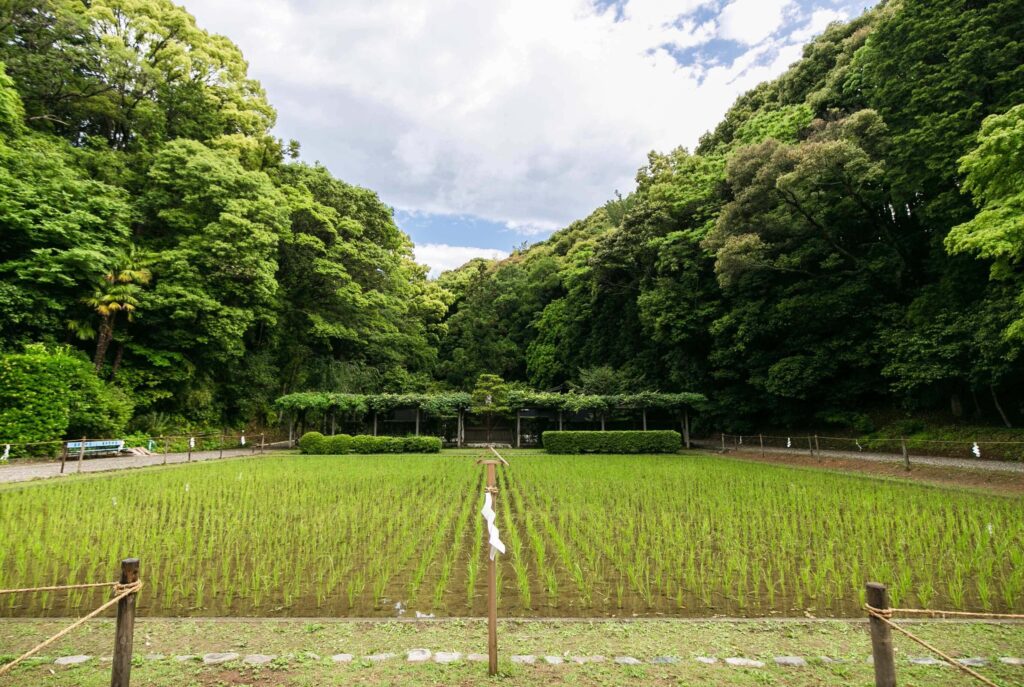
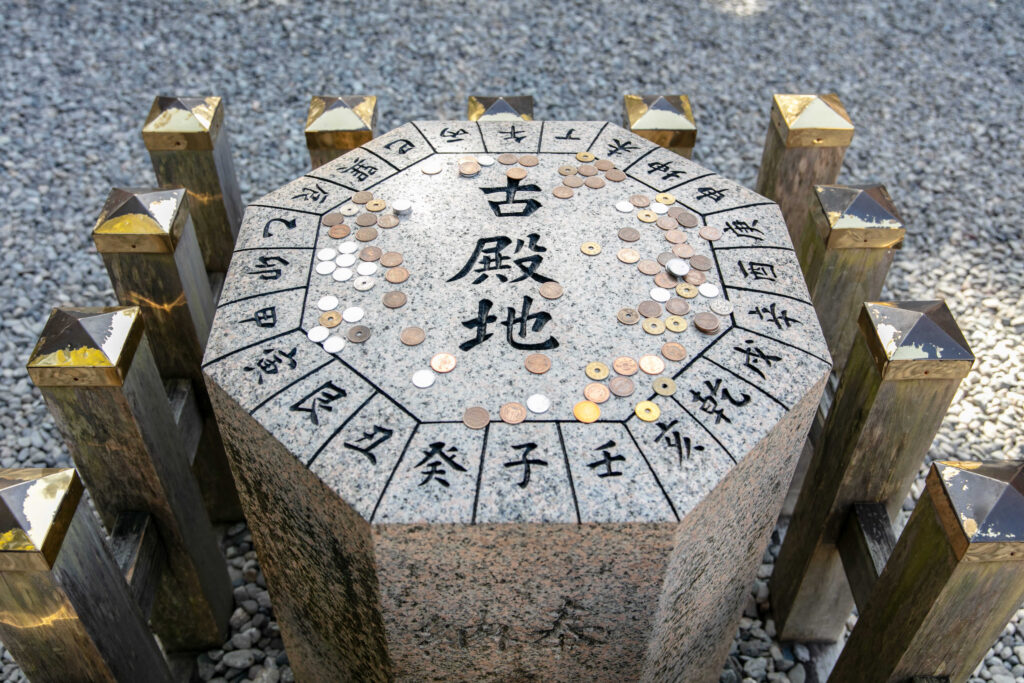
In the center of the precincts of Sarutahiko Shrine, there is an old shrine (the place where the old shrine building was before the Sengu), and a compass stone is placed there.
The octagonal compass stone is a sacred power spot at Sarutahiko Shrine. Zodiac signs are carved into the stones, and it is said that if you visit the shrine and stroke your own zodiac sign or this year's zodiac sign, you can improve your luck.
There are no set rules regarding how to touch stones.
The direction stone is a power spot where you can receive the divine virtues of Sarutahiko Okami, so it is a place you definitely want to visit when visiting Sarutahiko Shrine.
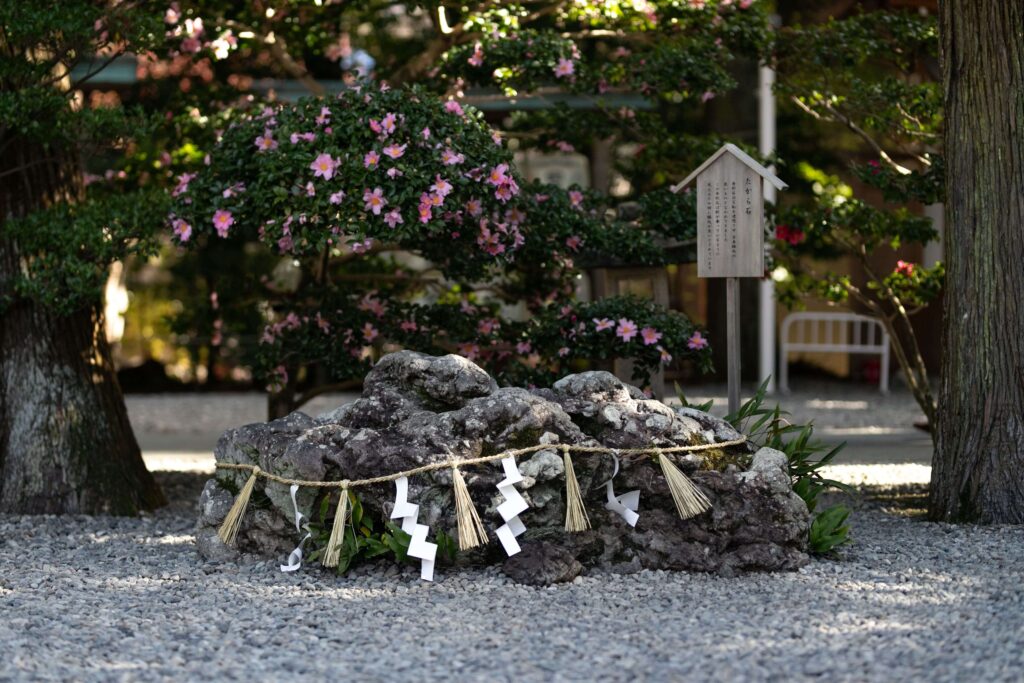
The Takara Stone on the right hand side of the shrine building is called ``Takara Stone'' because it looks like a white snake, a symbol of financial luck, is sitting on a stone that resembles a treasure ship. Treasure ships and white snakes have long been said to bring treasure, and are power spots that can improve your financial luck.
It is a very auspicious power spot where two lucky charms overlap.
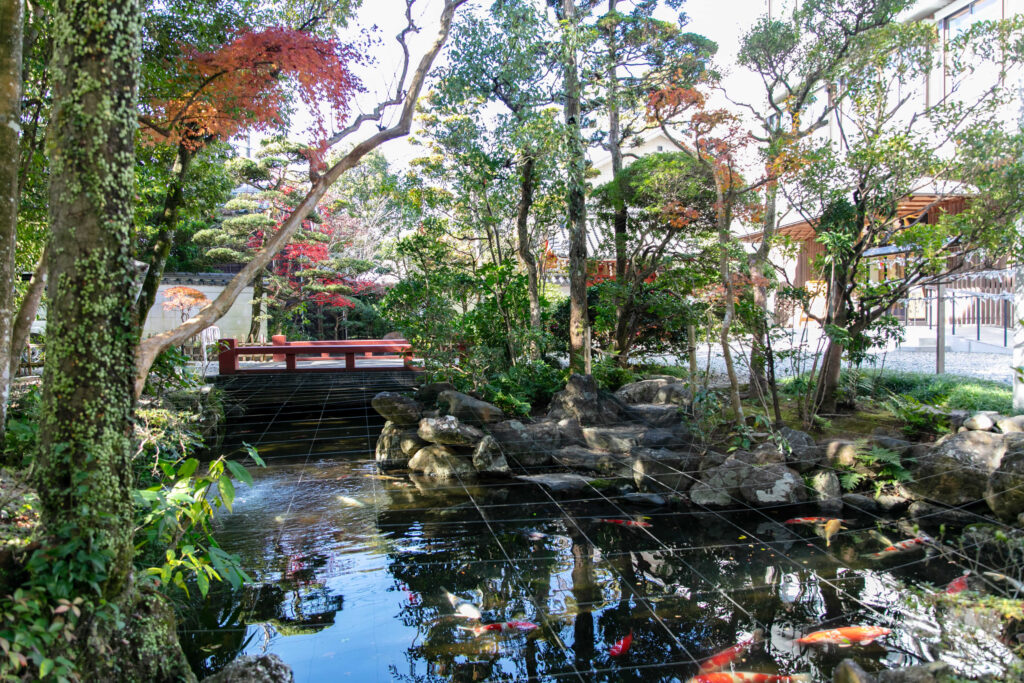
Kotakaike Pond in the precincts is a pond that enshrines the deity of Ujitokoke, the god who creates all things, who is the chief priest of Sarutahiko Shrine. Since ancient times, there has been a legend that this pond will be blessed with children, so it came to be called Kotama Pond.
It has become a popular spot for many people, including newlyweds hoping to conceive a child and pregnant women hoping to give birth to a healthy baby, to pray for a safe delivery.
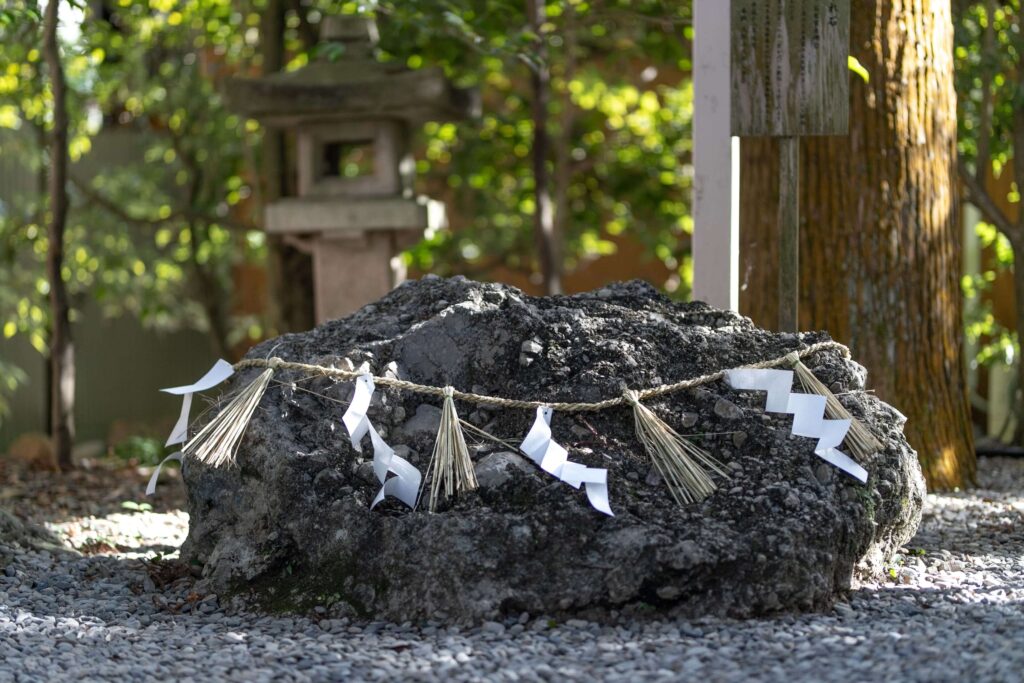
In addition to Takara Ishi, there is another power spot related to stones at Sarutahiko Shrine, and that is "Sazare Ishi", which also appears in the lyrics of Kimigayo.
Sazare-ishi is a stone made of limestone pebbles that have been dissolved by rainwater and hardened, and the stones at Sarutahiko Shrine are of a size that is rarely seen.
Sazareishi is written in kanji as ``Sosaishi'', and as the name suggests, it is a small stone or pebble, but it is said that it grows larger as time passes, just like a person grows, and has been used as a lucky charm where the gods dwell since ancient times. It is gaining faith in many places. When you visit Sarutahiko Shrine, pray to the pebbles for good health.
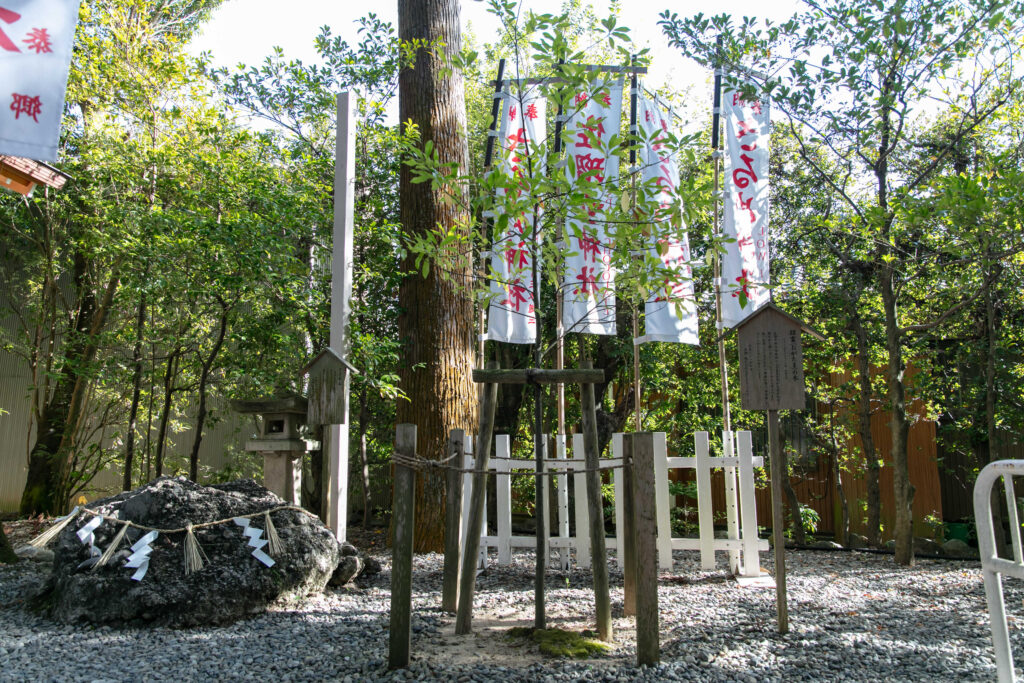
The Ogatama tree next to the Sazare Stone is said to have been used by Ameno Uzume no Mikoto when she danced in front of Amanoiwado. It is said that the ``kagura bells'' used by shrine maidens in rituals are modeled after the fruit that resembles the shape of grapes grown by a tree that invites spirits.
There is also a theory that it was the model for the design of the young tree depicted on the back of the 1-yen coin. Ameno Uzume no Mikoto, who used the spirit tree for dance, was a master dancer and was worshiped by people in the entertainment industry since ancient times as a god of entertainment.

In the parking lot of Sarutahiko Shrine, there is a stone monument with a poem written by Norinaga Motoori. This stone monument was presented by Motoori Norinaga to the Ujito noble family when he visited the shrine, and it has the inscription, ``Since the time of the gods, the end of the gods, he has come to the ivy, and his name is Ujinodo lord, my force Norinaga.'' I am.
The meaning is ``My dear friend, the famous Ujino court noble family that has continued uninterruptedly as a descendant of the great gods since the age of the gods.''
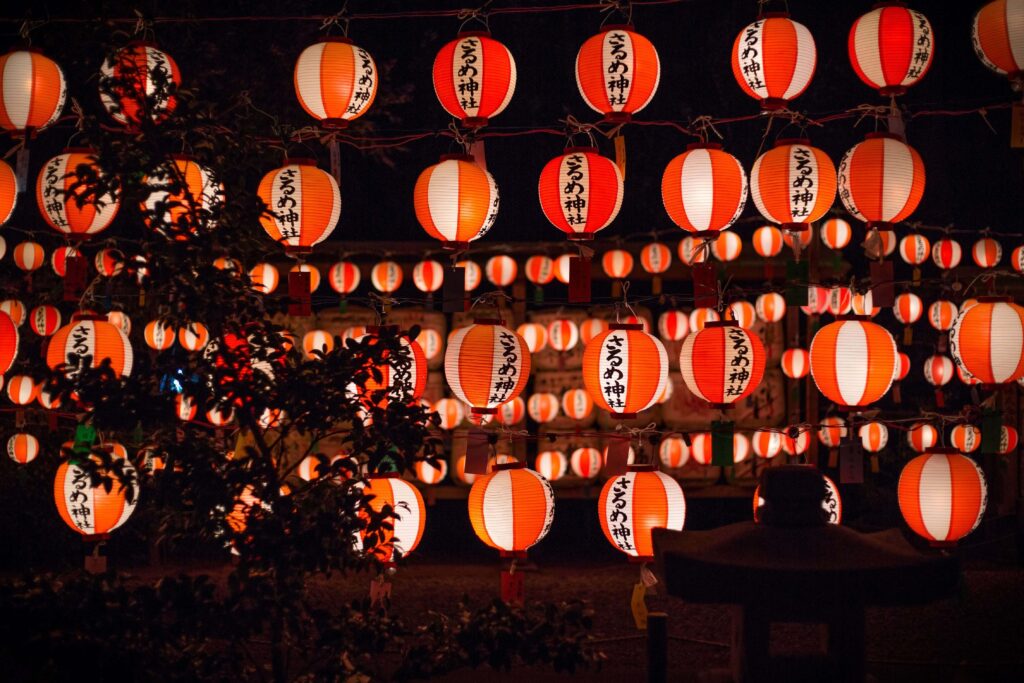
The Sarume Shrine Annual Festival is held on August 8th every year at Sarume Shrine, which enshrines the god of entertainment, Tenu Ukeume no Mikoto. Not only the day of the festival, but also the day before, is a highlight. On the eve of the festival, many lanterns donated from all over the country are lit up, and you can see a fantastic sight in the precincts at night.
The beautiful sight of the lanterns illuminating the temple grounds at night is a must-see!
As a shrine that enshrines the god of performing arts, events are held on stage during the Sarume Shrine Annual Festival and Yoi Matsuri, and the festival attracts a large number of worshipers every year.
The Shichigosan Festival is held every year at Sarutahiko Shrine on November 11th, Shichigosan Day, to pray for the healthy growth of children. Sarutahiko Shrine accepts Shichigosan prayers throughout the year, but those who receive prayers on the day of the Shichigosan Festival can receive a lottery ticket.
Ema-shaped panels will be set up on the grounds until late December where you can take commemorative photos for Shichi-Go-San.
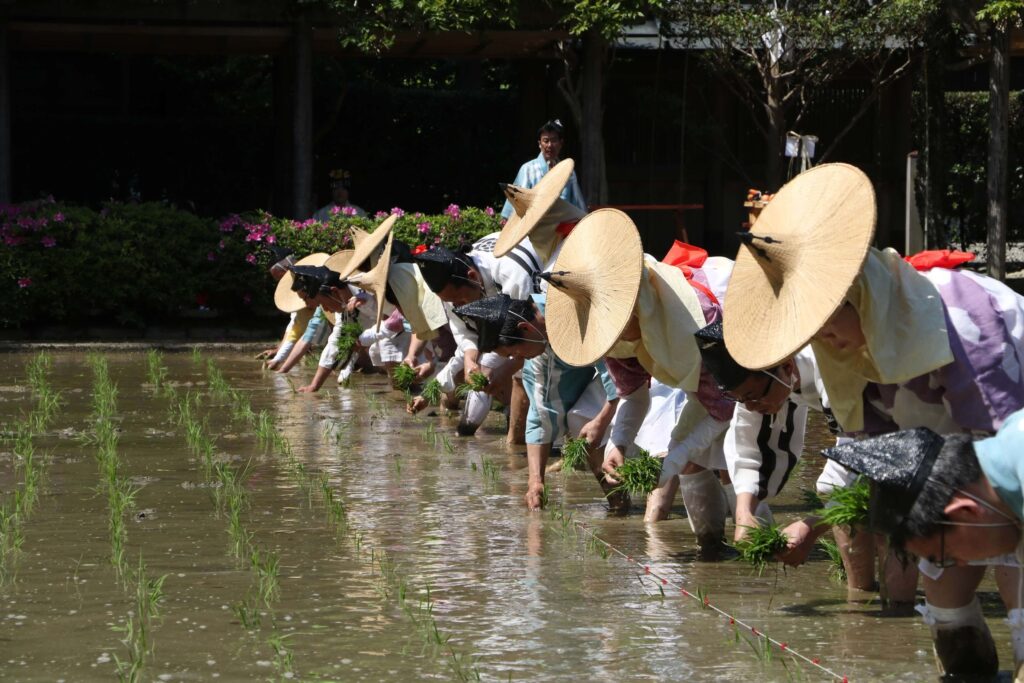
The Ota Festival, held on May 5th every year, is a famous festival that has been designated as an intangible folk cultural property of Mie Prefecture. It is held every year at the Kanda behind Sarutahiko Shrine, and after planting rice in traditional costumes, the participants are divided into Ebisu and Daikoku camps and face off with Uchiwazumo.
If Ebisu wins, there will be a good catch, and if Daikoku wins, there will be a good harvest.It is predicted whether the year will be a good catch or a good harvest.
After the Uchiwa-Kakuroki is over, the Harunen Odori dance, which features a unique chant of ``Hae-ya-hae, Hae-ya-hae,'' is performed on the grounds.
"Spring Festival" and "Autumn Festival" are large festivals held twice a year at Sarutahiko Shrine.The spring festival is held for two days on April 2th and 4th, and the autumn festival is held for two days on November 4th and 5th. I will.
On the evening of the 4th, the shrine is illuminated only by the light of candles, and the funeral service is held in a pure space called jyoan (pure darkness during rituals).
Niinamesai is a festival held every year on November 11rd at shrines across the country to celebrate the autumn harvest and to thank all the gods for new grains. The rituals of Niinamesai differ in each region, but at Sarutahiko Shrine, the Michihiraki Omikoshi goes around Oharaimachi Street and visits the inner shrine.
The Clean Sand Festival is a festival held on December 12th every year, during which clean sand is used to purify the land and earth for worshipers of Sarutahiko Shrine across the country in preparation for the New Year holidays. )" will be distributed.
The sand of the premises is a gift from Sarutahiko Shrine.
It is a festival held on New Year's Eve to exorcise the sins and impurities of the past year and welcome the new year in a clean state.
The Great Purification Ceremony on New Year's Eve is a festival that worshipers can also participate in. Worshipers are given gohei called konusa, shake the konusa from side to side and blow on it, and then burn it to purify themselves at a bonfire in the shrine grounds. .
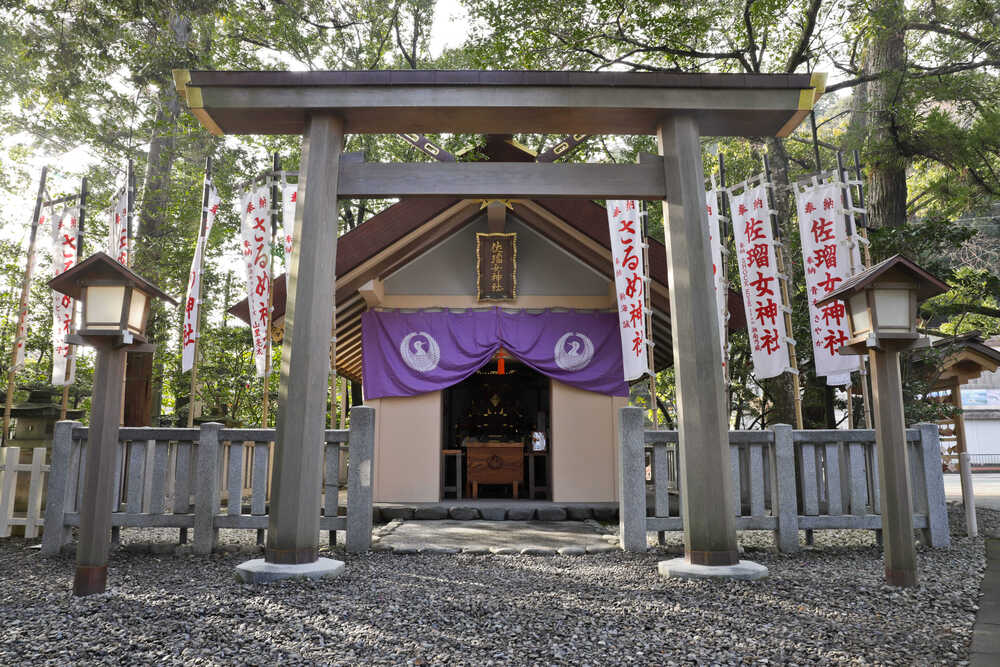
Sarume Shrine is a shrine located in the southeast of the shrine grounds, and is dedicated to Ame-no-Uzume-no-Mikoto, who brings blessings for marriage and advancement in the performing arts.
Amaterasu Omikami was the first god to meet Sarutahiko Omikami, who came to welcome the god of heaven, and danced a dance to get Amaterasu Omikami, who was holed up in Amanoiwato, to come out.
Since the myths of that time, he has been worshiped as the god of entertainment.
Many athletes and entertainers visit Sarume Shrine to pray for improvement in their performing arts.
The famous blessing of Sarume Shrine is to improve one's performance in the performing arts, but Sarume Shrine is also a shrine for marriage.
From the myth that Amatsukami (the god who resides in Takamagahara) and Kunitsukami (the god who lives in the land where people live) are believed to mediate between the gods, Tenyu Ukeme no Mikoto is also believed to be the god of matchmaking, and is believed to be the god of matchmaking, and is believed to be the god of matchmaking. It is said that it connects various relationships such as work and things in a positive direction.
Sarume Shrine is also characterized by the Maizuru emblem on the side of the shrine's torii gate.
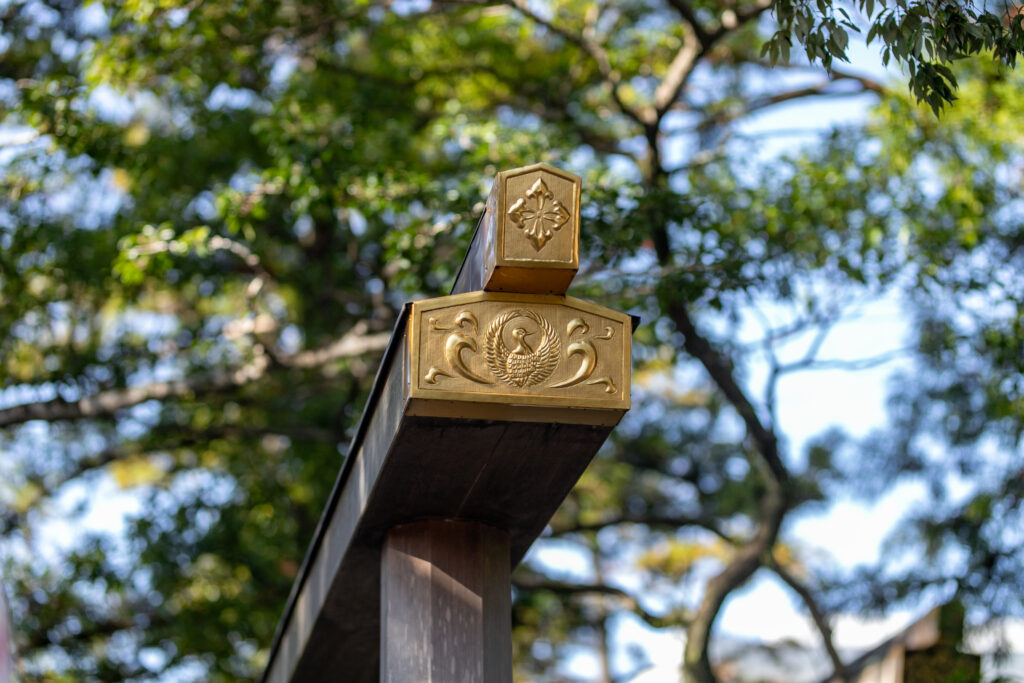
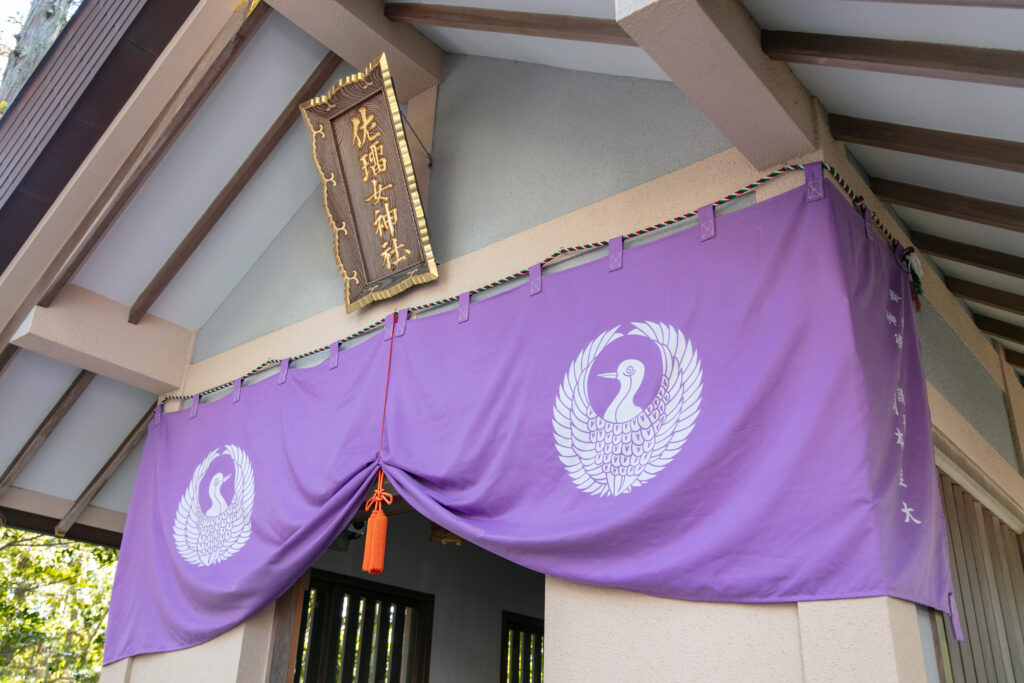
The word Sarume in Sarume Shrine has its origin. Amaterasu Omikami was accompanied by Ninigi no Mikoto, nephew of Amaterasu Omikami, and was guided to the ground by Sarutahiko Omikami.
Tenu Ukeme no Mikoto is also the god who mediates between the gods of Takamagahara, including Sarutahiko no Okami and Qiongki no Mikoto.
Because of her accomplishment in bringing Qiongiko no Mikoto to heaven, she was given the title ``Sarume no Kimi'', which is based on the name of Sarutahiko Okami. It is said that Tenu Ukeme no Mikoto later married Sarutahiko Okami.
The meaning of the word Sarume is still unknown, but it is said that this myth is the origin of the name of Sarume Shrine.
■Main wishes of Sarume Shrine
Sarume Shrine, which enshrines the god of entertainment, ``Tenyu Ukeme no Mikoto,'' has various benefits.
The main benefits of Sarume Shrine include improvement in performing arts, improvement in sports, and marriage.

| Zip Code | 〒516-0026 |
| Address | 2-1-10 Ujiurata, Ise City, Mie Prefecture |
| Inquiries | 0596-22-2554 |
| Business hours (awarding office) | 8:30am ~ 17:00am |
Here we will introduce recommended restaurants around Sarutahiko Shrine. There are various restaurants near Sarutahiko Shrine, including sushi restaurants, French restaurants, and cafes, and some restaurants also accept takeout.
Restaurant Okuyama is a Japanese restaurant located on the old town road that uses seasonal local ingredients.
Based on the concept of ``food that is kind to the body,'' the dishes that make use of the natural flavors of the ingredients without additives or preservatives are popular for their colorful and fresh taste.
The menu is extensive and includes course meals (advance reservations required), reasonably priced bento boxes, and a la carte dishes. Crab cream croquettes are a popular specialty among locals and tourists alike, and are also sold as souvenirs. We also sell local sake from Ise, so it's also recommended for alcohol lovers.

| Zip Code | 〒516-0027 |
| Address | 139 Sakuragicho, Ise City, Mie Prefecture (along Ise Kaido Road) |
| Phone | 0596-22-1515 |
| Opening hours | 12: 00 ~ 14: 00, 18: 00 ~ 21: 00 |
| Closing days | Monday (in the case of a holiday, the next day) |
Sushidokoro Atsumura, located in Sakuragicho, Ise City, is a sushi restaurant that was listed in the Michelin Bib Gourmand in 2019 (one of the standards of the Michelin Guide, a high-quality restaurant under 6,000 yen).
The owner procures fresh local fish and fish ordered from all over the country, and the owner's favorite toppings are served.
Sushi restaurants may have the impression of being difficult to enter, but they also offer a variety of inexpensive and hearty lunch menus and course meals, making them not only delicious but also good value for money.
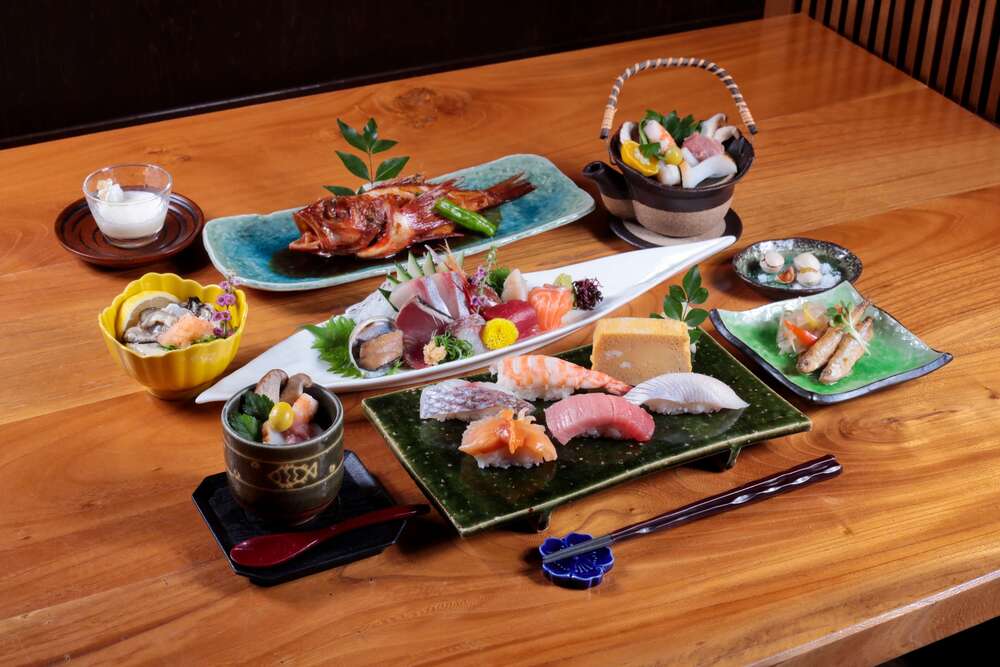
| Zip Code | 〒516-0027 |
| Address | 239 Sakuragicho, Ise City, Mie Prefecture |
| Phone | 050-5488-5063 |
| Opening hours | 11: 30 ~ 14: 00, 17: 00 ~ 21: 00 |
| Closing days | Mondays (Irregular holidays twice a month) |
Campagne is a long-established French restaurant located halfway between the Geku and Inner Shrine of Ise Jingu.
We value local production for local consumption, and you can enjoy authentic French cuisine made with plenty of ingredients from the chef's hometowns of Kumano and Ise-Shima. The store's name, Campagne, means hometown or countryside, and the interior has a relaxing and homely atmosphere.
They also offer take-out sweets, and the best time to go to buy sweets is around 12:XNUMX, when many freshly made sweets are available.
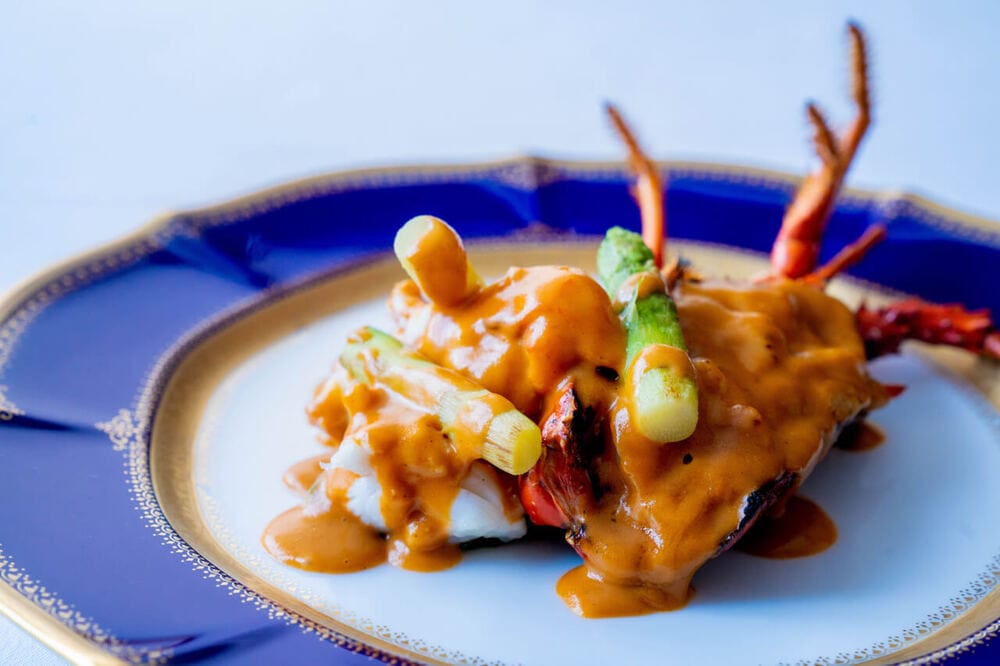
| Zip Code | 〒516-0035 |
| Address | 115-3 Seitacho, Ise City, Mie Prefecture |
| Phone | 0596-29-2000 |
| Opening hours | 10:30am ~ 22:00am |
| Closing days | Monday · Tuesday |
home+ is a French restaurant near Tsukuyomi Shrine. The concept is a restaurant that you would want to visit on special occasions like birthdays, and you can enjoy French cuisine made with local, seasonal ingredients that changes monthly.
The chef trained in Belgium, and his popular products include ``Wafuru,'' a waffle with ingredients from Ise, and ``Ise lobster curry,'' which comes with a mini salad made with plenty of lobster.
The Belgian Fair is held only during the summer, where you can enjoy course meals featuring Belgian cuisine.

| Zip Code | 〒516-0028 |
| Address | 723-7 Nakamura-cho, Ise City, Mie Prefecture |
| Phone | 0596-23-1243 |
| Opening hours | 11:30〜15:00(14:00 LO)、17:30〜22:00(21:00 LO) |
| Closing days | Tuesdays |
Mameku is a tofu cafe near Tsukuyomi Shrine. There are many healthy menu items that feature tofu, such as tofu set and tofu bowl, making this restaurant irresistible for tofu lovers.
For the tofu set on the lunch menu, you can choose your favorite tofu from three types: freshly made tofu, ankake tofu, and zaru tofu.
They sell several types of shaved ice that are only available during the summer, including ones made with milk soy milk and ones topped with raspberries and blueberries.

| Zip Code | 〒516-0028 |
| Address | 435-7 Nakamura-cho, Ise City, Mie Prefecture |
| Phone | 0596-20-6789 |
| Opening hours | 11:00 ~ 18:00 |
| Closing days | Thursday |
Orange Cafe Wood is a cafe attached to the wedding venue ``The Orange Garden Isuzukawa'' located right near Isuzugawa Station, and it has a casual atmosphere, with sauces that are also used in wedding dishes being used in the menu. However, you can enjoy the authentic taste.
It's a stylish cafe with a warm wooden feel, and its lunch menu changes monthly. You can enjoy a different menu depending on the month, such as creative lunch plates and pasta created by chefs who are not particular about genres, using local ingredients such as seasonal seafood, Ise chicken, and Ise pork.
It's located near the station, and you can use the cafe or take out food, so we recommend using it while waiting for a train or bus.

| Zip Code | 〒516-0028 |
| Address | 325-2 Nakamura-cho, Ise City, Mie Prefecture |
| Phone | 0596-21-4040 |
| Opening hours | 11:00 ~ 17:00 |
| Closing days | third Wednesday |
Near Sarutahiko Shrine, there are museums and museums related to Ise. When you visit the shrine or Sarutahiko Shrine, be sure to stop by and experience the charm of Ise.
The Kopo Ito Museum, located a 3-minute walk from Sarutahiko Shrine, exhibits the works of Kopo Ito, the eldest daughter of Sarutahiko Shrine's chief priest, Sadamiki Ujido, and a painter who was active from the Meiji to Showa periods. I am. Kopo Ito was a disciple of Hyakuurin Isobe, a painter from the same hometown, and was a painter who mainly painted genre paintings and beautiful women.
The museum has a calm atmosphere and mainly exhibits paintings of beautiful women and historical paintings, and the exhibits change seasonally, so you can enjoy different works depending on the season.
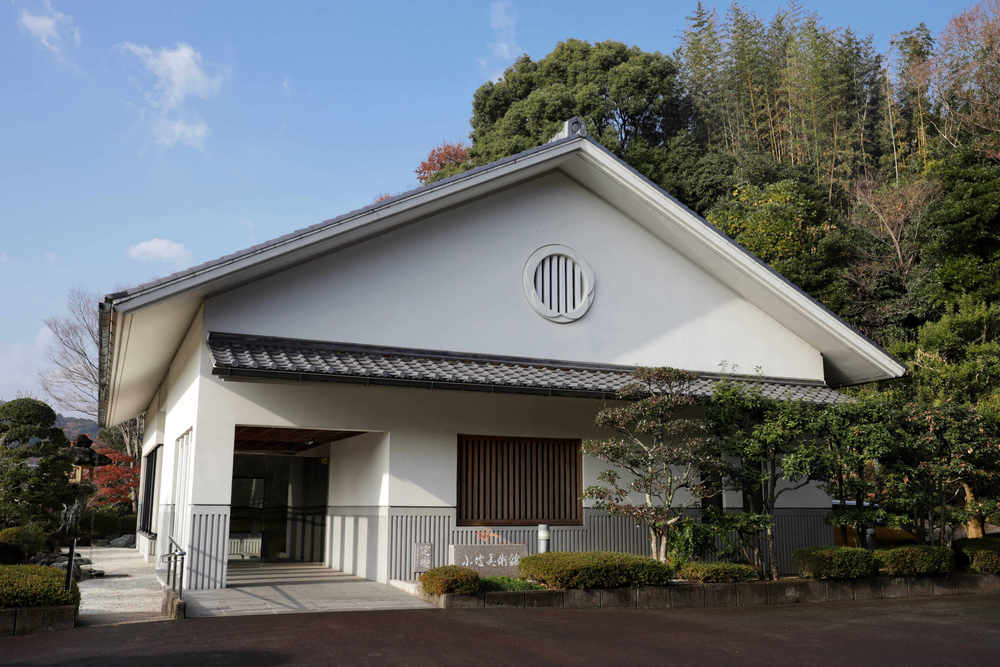
| Zip Code | 〒516-0026 |
| Address | 2-4-65 Ujiurata, Ise City, Mie Prefecture |
| Phone | 0596-22-2554 |
| Museum Admissions Fee | General 300 yen, high school student 200 yen, elementary and middle school student 100 yen |
| Opening hours | 09:30 ~ 16:00 |
| Closing days | Monday Tuesday |
Iseko City Sangu Kaido Museum is a museum located on the old town road that connects the Geku and Naiku. Inside the museum, there are many exhibits that show the history of Furuichi Kabuki and the Furuichi red-light district, one of Japan's three major red-light districts, as well as materials about the nearby Mayoshi Ryokan.
In addition to the regular exhibits, special exhibitions are held for a limited time, and the exhibits change depending on the season. Admission to the Iseko City Sangu Kaido Museum is free and it also doubles as a rest area, so it's a great place to take a break after walking around town.
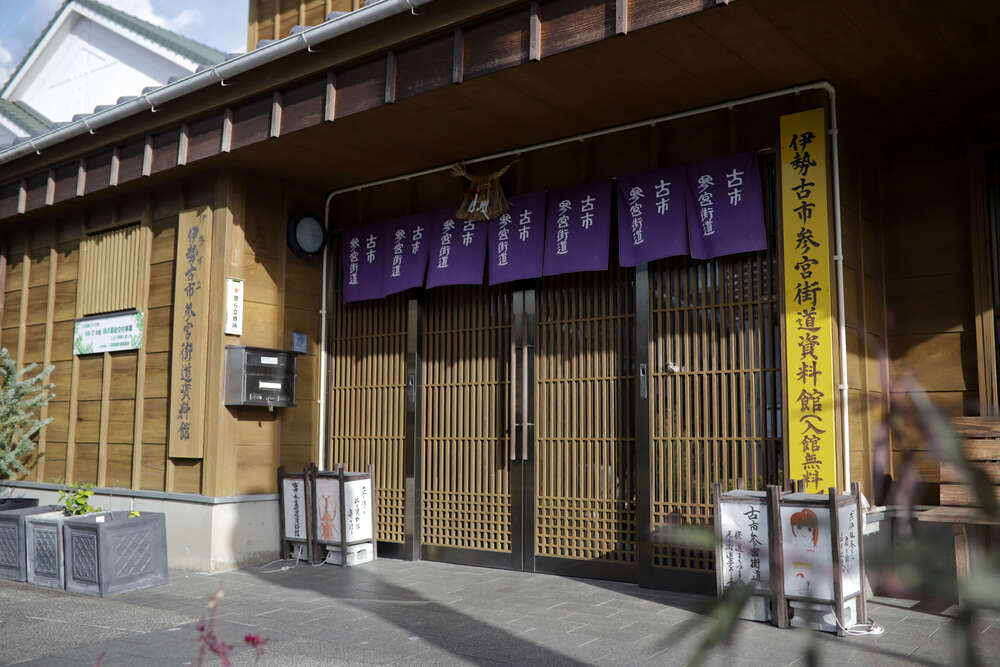
| Zip Code | 〒516-0034 |
| Address | 69 Nakanocho, Ise City, Mie Prefecture |
| Phone | 0596-22-8410 |
| Museum Admissions Fee | Free |
| Opening hours | 9:00 ~ 16:30 |
| Closing days | Monday (the next day if it is a holiday), the day after a holiday (excluding if that day is a Sunday), New Year's holidays (12/29 - 1/3) |
We have introduced a summary of recommended spots in and around Sarutahiko Shrine.
Sarutahiko Shrine, which enshrines Sarutahiko Okami, the God of Michihiraki, is a shrine that has a variety of blessings, and there are many spots within the precincts that offer blessings, such as direction stones and trees that invite spirits.
Sarume Shrine, which is frequently visited by entertainers and celebrities, is visited by many worshipers throughout the year, and is also a popular shrine for Shichi-Go-San festivals and weddings. It's located close to Ise Jingu and Oharaimachi, so when you're sightseeing in Ise or visiting Ise Jingu, be sure to visit Sarutahiko Shrine as well!